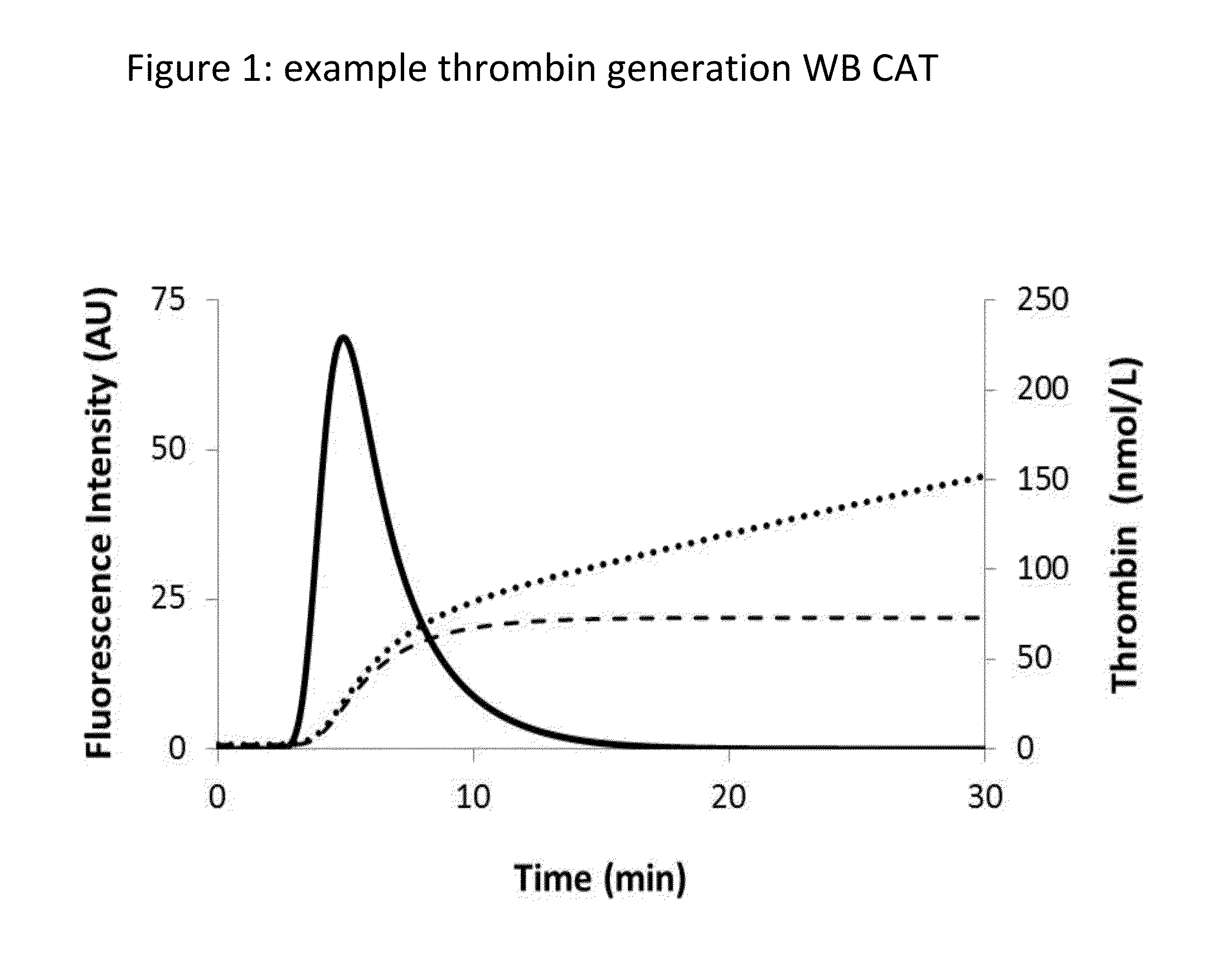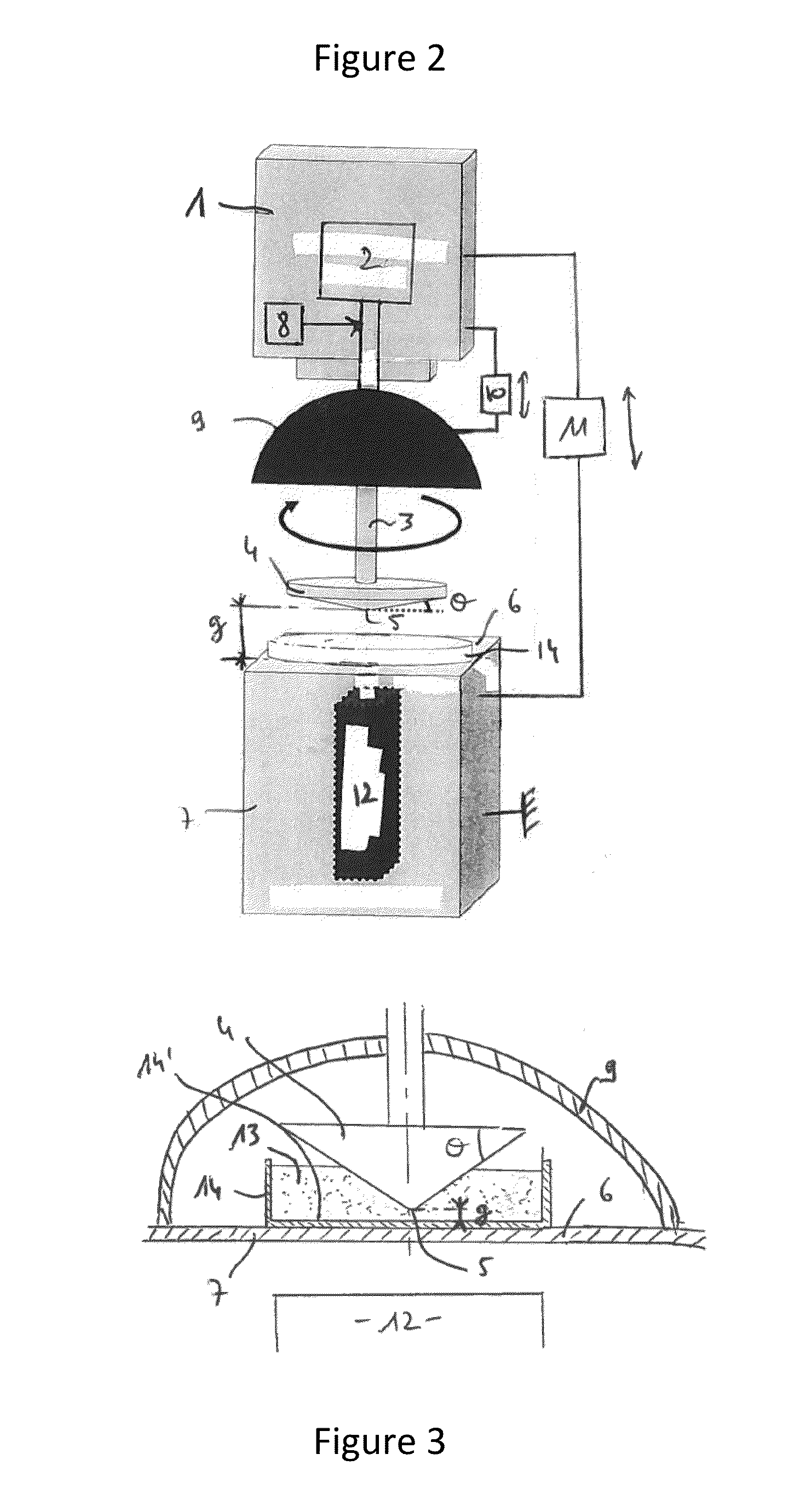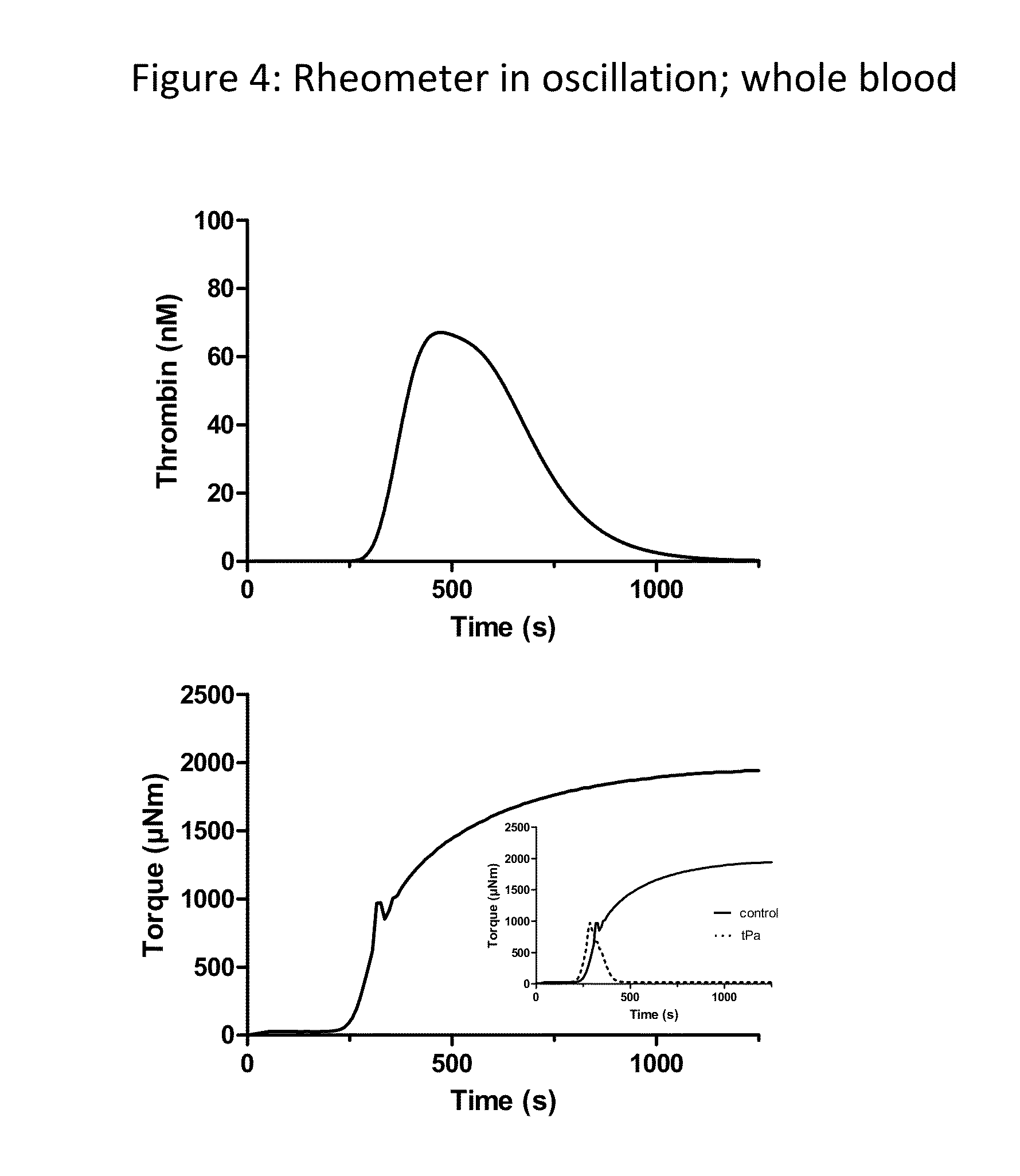Simultaneous measurement of thrombin generation and clot strength in plasma and whole blood
a thrombin and clot strength technology, applied in the field of thrombin generation and clot strength measurement in plasma and whole blood, can solve the problems of inability to predict the action of its parts, the burst of thrombin remains limited in time and space, and the clotting time is not automatically a good indicator of thrombin activity, so as to reduce complexity and improve the effect of clotting strength
- Summary
- Abstract
- Description
- Claims
- Application Information
AI Technical Summary
Benefits of technology
Problems solved by technology
Method used
Image
Examples
example 1
Thrombin Generation in Relation to Clot Strength Based on Viscosity Detection
[0130]Thrombin generation was triggered in whole blood as indicated above on the glass of an MCR301 rheometer with a built-in fluorometer. Immediately after addition of the FluCa solution, the measuring system of the rheometer was set to a zero gap position and brought into oscillation, at a frequency of 10 Hz and an angle of 1°. Torque and fluorescence were measured as indicated above, both for the triggered sample (first part of the sample, i.e., first subsample) and the sample containing the calibrator (second part of the sample, i.e., second subsample). The use of the calibrator avoids the donor-dependent influence of the fluorescent signal through absorption of light and quenching of the fluorescence. Based on the calibrator curve and after correction for the α2M-thrombin present in the sample which is still able to convert the substrate, the thrombin generation curve for the triggered sample was deter...
example 2
Thrombin Generation in Relation to Fibrin Formation Based on Viscosity Detection; Simulation of Blood Flow
[0131]Thrombin generation was triggered in platelet-poor plasma or whole blood as indicated above on the glass of an MCR301 rheometer with a built-in fluorometer. Immediately after addition of the FluCa solution, the measuring system of the rheometer was set to a zero gap position and brought into rotation. This rotation of the measuring system allowed simulation of the blood flow, a shear rate of 100-300 / s corresponding to venous blood flow and above 800 / s to arterial blood flow. Viscosity and fluorescence were measured as indicated above, both for the triggered sample and the sample containing the calibrator. Measurements were done in triplicate and the mean is shown in FIG. 5a (platelet-poor plasma) and 5b (whole blood). In platelet-poor plasma, shear rates higher than 100 / s resulted in decreased thrombin generation and clot strength. The effect on clot strength was repeated ...
example 3
Visualization of the Effect of Doolittle Peptide on Thrombin Generation and Clot Strength
[0132]Thrombin generation was triggered in platelet-poor plasma as indicated above on the glass of an MCR301 rheometer with a built-in fluorometer. Increasing concentrations of Doolittle peptide (Gly-Pro-Arg-Pro), 0.5 mM up to 2 mM, were added to the sample and corresponding calibrator. Doolittle peptide binds with a high affinity to fibrinogen, resulting in the inhibition of fibrin polymerization. Immediately after addition of the FluCa solution, the measuring system of the rheometer was set to a zero gap position and brought into rotation, resulting in a shear rate of 300 / s. Viscosity and fluorescence were measured as indicated above both for the triggered sample and the sample containing the calibrator. Measurements were done in duplicate and the mean is shown in FIG. 6. As expected, increasing amounts of Doolittle peptide significantly decreased the viscosity of the sample compared to the co...
PUM
| Property | Measurement | Unit |
|---|---|---|
| thickness | aaaaa | aaaaa |
| thickness | aaaaa | aaaaa |
| angle | aaaaa | aaaaa |
Abstract
Description
Claims
Application Information
 Login to View More
Login to View More - R&D
- Intellectual Property
- Life Sciences
- Materials
- Tech Scout
- Unparalleled Data Quality
- Higher Quality Content
- 60% Fewer Hallucinations
Browse by: Latest US Patents, China's latest patents, Technical Efficacy Thesaurus, Application Domain, Technology Topic, Popular Technical Reports.
© 2025 PatSnap. All rights reserved.Legal|Privacy policy|Modern Slavery Act Transparency Statement|Sitemap|About US| Contact US: help@patsnap.com



